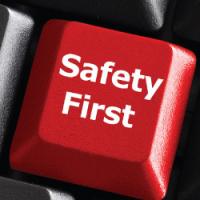- Posts: 350
- Thank you received: 11
Car Explodes from Leaking Acetylene Tank
- Safety Toolbox Talk Webmaster
-
 Topic Author
Topic Author - Offline
- Administrator
-

Cincinnati Enquirer - October 31, 2008
GREEN TWP. -- An explosion that destroyed a car on a residential street and sent its driver to the hospital Thursday morning was likely caused by a leaking acetylene-gas tank in the back seat, according to investigators.
Authorities said fumes from a small leak in the tank ignited when the driver, Anthony Nuss, 30, of 3609 Krierview Drive, started his car at about 8:20 a.m. as he left his home for work. The tank had been placed in the trunk by the victim Wednesday night in anticipation of replacing the tank this morning. Investigators believe an electrical spark ignited fumes in the vehicle; the spark was created when the vehicle was started by the victim.
The explosion carried the debris several hundred feet in all directions. Some even landed on top of two-story roofs. The blast blew out windows of at least two homes on either side of Nuss’ car. That door's red interior is the only thing that indicates that this was a car. Debris, including the car's rear bumper, stretches 150 feet to the rear of the car.
Nuss was taken to University Hospital. Emergency workers on the scene say he had burns over 20 to 40 percent of his body.
All compressed gases may pose hazards when transported. Flammable gas from a leaking container in the trunk of a car can be ignited by a spark from a brake light, tail light, or turn signal. It is not safe to transport acetylene and other compressed gas cylinders in enclosed passenger vehicles. The preferred vehicle for transporting compressed gases, especially flammable gases, is one with adequate ventilation, such as the back of a pick-up truck. Never put acetylene cylinders in confined compartments such as the trunk of a car.
- Make sure the cylinder is secured upright within the vehicle.
- Be aware that environmental conditions, such as heat exposure, may cause the temperature of the cylinder to rise to excessive levels that could lead to a release of product even if the ambient temperature is relatively low.
Please Log in or Create an account to join the conversation.
